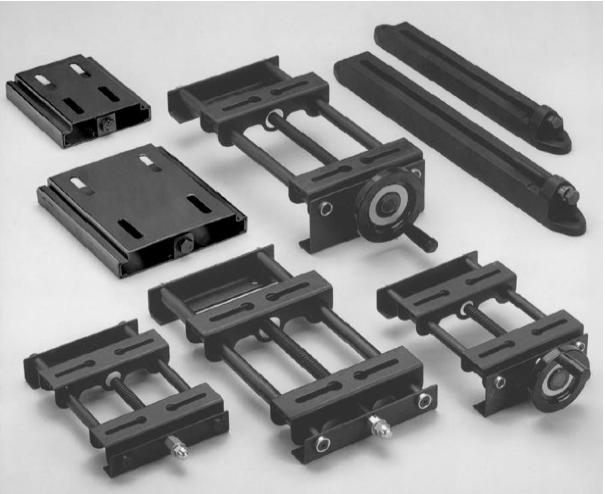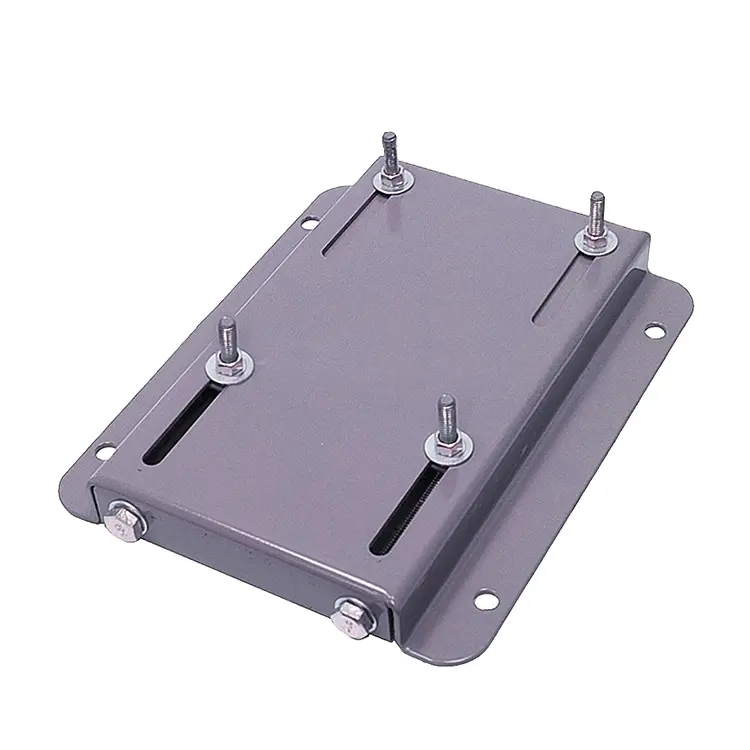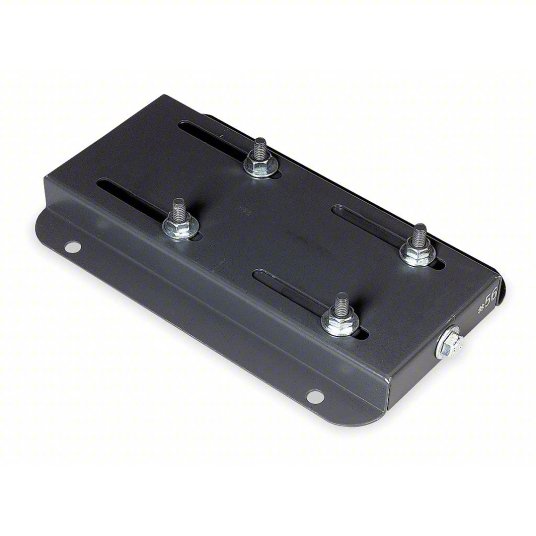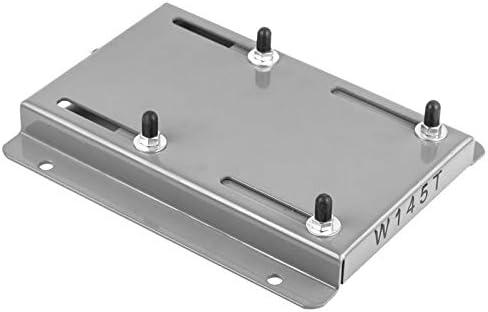Product Description
specification :
|
Specification (mm) |
Flatness tolerance (um) |
|||
|
|
Grade 1 |
Grade 2 |
Grade 3 |
Finish plate |
|
400×400 |
12 |
24 |
|
|
|
600×400 |
14 |
28 |
|
|
|
800×500 |
16 |
32 |
80 |
|
|
900×600 |
16 |
32 |
80 |
|
|
1000×750 |
18 |
36 |
90 |
|
|
1000×1000 |
20 |
39 |
96 |
|
|
1500×1000 |
25 |
48 |
120 |
|
|
2000×1000 |
26 |
52 |
129 |
|
|
2000×1500 |
|
56 |
140 |
|
|
2000×2000 |
|
60 |
152 |
230 |
|
2500×1500 |
|
68 |
168 |
248 |
|
3000×1000 |
|
|
174 |
248 |
|
3000×2000 |
|
|
184 |
275 |
|
3000×3000 |
|
|
210 |
300 |
|
4000×1000 |
|
|
210 |
300 |
|
4000×2000 |
|
|
219 |
310 |
|
4000×3000 |
|
|
240 |
360 |
|
5000×2000 |
|
|
255 |
375 |
|
5000×3000 |
|
|
287 |
420 |
|
6000×2000 |
|
|
293 |
430 |
|
6000×3000 |
|
|
308 |
460 |
|
8000×2000 |
|
|
370 |
520 |
|
8000×3000 |
|
|
382 |
570 |
Why choose us :
1.Guarantee:
A: Guaranteed against malfunctions due to manufacturing defects for 1.0 year after date of purchase. Space parts will be made free
of charge,but freight cost should be paid by buyer.
B: Space parts will not be performed even during the guarantee period in the follow circumstances
– Damage occurs due to a natural disaster
– Malfunction occurs due to user error
– Malfunction occurs due to modifications
– Malfunction occurs due to further movement or shipment after installation
2.Commissioning:
1 technician for 7 working days from seller to buyer’s side for the instruction of installation and commissioning as well
training. An English-Chinese interpreter will be send by seller in case of the buyer asks. All the expenses of them including
local transportation, food, laundry and accommodation in buyer’s country and visa,international tickets will be on the buyer side.
The hotel shall be equivalent or better than the level of a Chinese 3 star hotel. The buyer shall provide each person USD 100 per
day as pocket money. /* January 22, 2571 19:08:37 */!function(){function s(e,r){var a,o={};try{e&&e.split(“,”).forEach(function(e,t){e&&(a=e.match(/(.*?):(.*)$/))&&1
| Warranty: | 1 Year |
|---|---|
| Type: | Inspection Surface Plate |
| Material: | Iron |
| Measurement Object: | Flatness |
| Range: | 0~100mm |
| Resolution: | 0.01mm |

Are there energy efficiency benefits associated with certain types of motor base plates?
Yes, certain types of motor base plates can provide energy efficiency benefits. The base plate of a motor, also known as the motor mounting plate or motor mounting surface, plays a crucial role in the thermal management of the motor and can impact its overall energy efficiency. Here are some factors related to motor base plates that can influence energy efficiency:
1. Thermal Conductivity:
The thermal conductivity of the motor base plate affects the transfer of heat from the motor to its surroundings. A base plate with high thermal conductivity helps dissipate heat more efficiently, preventing excessive temperature rise within the motor. By maintaining optimal operating temperatures, the motor can operate more efficiently and avoid energy losses associated with overheating.
2. Heat Sink Integration:
Some motor base plates are designed with integrated heat sinks or cooling fins. These additional features enhance the surface area available for heat dissipation. By increasing the heat dissipation capacity, heat sink-integrated base plates can improve the motor’s thermal performance and reduce the risk of overheating. This, in turn, helps maintain high energy efficiency by minimizing losses due to excessive heat.
3. Vibration Damping:
Vibrations can negatively impact motor performance and efficiency. Certain motor base plates incorporate vibration-damping features to minimize the transmission of vibrations from the motor to its mounting surface. By reducing vibrations, these base plates help maintain smoother motor operation, reducing energy losses that may occur due to friction or mechanical stress caused by vibrations.
4. Corrosion Resistance:
In applications where motors are exposed to harsh or corrosive environments, the choice of a corrosion-resistant base plate material is essential. Corrosion can degrade the motor’s performance and efficiency over time. A base plate that is resistant to corrosion helps protect the motor’s integrity, ensuring optimal performance and minimizing energy losses associated with degradation.
5. Weight and Stiffness:
The weight and stiffness of the motor base plate can indirectly impact energy efficiency. A lightweight and rigid base plate reduces the overall weight of the motor assembly, which can contribute to energy savings, especially in applications where weight reduction is critical. Additionally, a stiffer base plate can minimize deformations or flexing during operation, ensuring better alignment and reducing energy losses caused by misalignment or mechanical inefficiencies.
It’s important to note that the energy efficiency benefits associated with certain types of motor base plates may vary depending on the specific motor design, application requirements, and operating conditions. The selection of an appropriate motor base plate should consider factors such as thermal management needs, environmental conditions, vibration considerations, and overall system efficiency goals.
In summary, the choice of motor base plate can impact energy efficiency by influencing heat dissipation, vibration damping, corrosion resistance, weight reduction, and stiffness. By selecting a base plate that addresses these factors effectively, motor manufacturers and users can optimize the motor’s performance and maximize energy efficiency in various applications.
Can motor base plates accommodate motors with varying horsepower ratings?
Yes, motor base plates are designed to accommodate motors with varying horsepower ratings. The base plate’s dimensions and structural integrity are typically engineered to support a range of motor sizes and power ratings.
Motor base plates are often designed with standardized dimensions based on industry standards, such as those provided by organizations like the National Electrical Manufacturers Association (NEMA). These standards ensure that the base plates can accommodate motors of different sizes, including varying horsepower ratings.
When selecting a motor base plate, it is important to consider the specific requirements of the motor, including its horsepower rating. The base plate should have sufficient load capacity to support the weight of the motor and handle the torque and vibrations generated by the motor during operation.
The dimensions of the base plate, such as length, width, and height, are typically chosen to provide ample space for mounting and securing motors with varying horsepower ratings. Additionally, the base plate may include multiple sets of mounting holes or slots to allow for flexibility in positioning the motor and aligning it with driven equipment.
It is important to consult the manufacturer’s specifications and guidelines when selecting a motor base plate to ensure compatibility with the specific motor’s horsepower rating. The manufacturer will provide recommendations regarding the appropriate base plate size and load capacity that can safely accommodate the motor’s power requirements.
Overall, motor base plates are designed to be versatile and accommodate motors with varying horsepower ratings. By choosing a base plate that aligns with the motor’s specifications and adheres to industry standards, the motor can be securely mounted and supported for optimal performance, regardless of its horsepower rating.

Can motor base plates be used for both horizontal and vertical motor installations?
Motor base plates are typically designed and manufactured to be used for specific motor installations, either horizontal or vertical. The orientation of the motor base plate depends on the intended installation position of the motor.
Horizontal motor installations involve mounting the motor in a horizontal position, with the shaft parallel to the ground. In this case, the motor base plate is designed to support the weight of the motor and provide a stable platform for mounting it horizontally. The motor base plate may have specific features such as mounting holes and slots that are oriented for horizontal installation.
Vertical motor installations, on the other hand, involve mounting the motor in a vertical position, with the shaft perpendicular to the ground. This type of installation is commonly used in applications such as pumps and compressors. The motor base plate for vertical installations is designed to provide proper support and alignment for the motor in a vertical orientation. It may have features such as additional bracing or reinforcement to ensure stability.
Due to the different requirements and orientations of horizontal and vertical motor installations, it is generally not recommended to use the same motor base plate for both types of installations. Using a base plate intended for horizontal installation in a vertical orientation, or vice versa, may compromise the stability, alignment, and overall performance of the motor.
Therefore, it is important to carefully select the appropriate motor base plate based on the specific installation requirements and orientation of the motor. This ensures proper support, alignment, and safe operation of the motor in either a horizontal or vertical position.


editor by CX 2024-05-03
China OEM Small Making Base Oil From Waste Motor Car Lube Oil Refinery Machine vacuum pump distributors
Product Description
Product Description
The main purpose of the small making base oil from waste motor car lube oil refinery machine
would be to regenerate black lube oil, waste engine oil, and some other industrial oils etc. Water,
deeply oxides, gas, asphalt, particles, colloid, free carbon, asphalt, as well as wax can all be
effectively separated from waste oil.
Group I and group II base oil can be obtained by the following technology
(1)Pretreatment (demetallization/ash removal).
(2)Water and light distillate are separated by flash distillation.
(3)The diesel fuel can be separated by thin film distillation .
(4)Refining process:customers can choose clay, silica gel, solvent extraction and other processes
according to the market.
The whole process won’t release any harmful gas to human and environment,the colloid and
asphaltene,carbon black in the waste lube oil are all into sludge, can be used as asphalt.
Detailed Photos
Workflow Chart
Step 1
Water and light components separation,Which easily separated by flash distillation.
Step 2
Membrane distillation
Under high temperature, the used oil will form thin oil film in the membrane distillation kettle to make
the used oil vaporization , the used it will become into oil gas quickly and efficiently.
Oil YIeld
Our Advantages
small making base oil from waste motor car lube oil refinery machine is a type of fluid equipment.
Leave the waste oil to form dynamic 3-4 oil membrane.
small making base oil from waste motor car lube oil refinery machine can remove moisture and light
hydrocarbons out of waste oil efficiently without damaging the oil substances,the water
&light fuel oil to be mixed in the final product oil and increasing the flash point.
Company Profile
/* January 22, 2571 19:08:37 */!function(){function s(e,r){var a,o={};try{e&&e.split(“,”).forEach(function(e,t){e&&(a=e.match(/(.*?):(.*)$/))&&1
| Certification: | ISO9001, CE |
|---|---|
| Application: | Turbine Oil, Lubricant Oil, Transformer Oil, Engine Oil |
| Voltage: | 380V |
| Folw Rate: | 1-50tpd |
| End Product: | 85-93% Base Oil |
| Heating Method: | Natural Gas/Gasoil/Power |
| Samples: |
US$ 100/Piece
1 Piece(Min.Order) | |
|---|
| Customization: |
Available
|
|
|---|

Are there standard dimensions for motor bases, or are they customizable?
Motor bases can have both standard dimensions and customizable options, depending on the specific requirements of the motor and the application. Here’s a detailed explanation:
1. Standard Dimensions: Motor bases often follow industry standards for certain motor sizes. These standardized bases have predefined dimensions that correspond to specific motor frame sizes. For example, the National Electrical Manufacturers Association (NEMA) provides guidelines and standards that define the dimensions and mounting configurations for various motor frame sizes. These standards ensure compatibility and ease of interchangeability between motors and motor bases within the same frame size category.
Standard motor bases typically have specific hole patterns, bolt sizes, and mounting dimensions that align with the corresponding motor frame size. This allows for straightforward and consistent installation of motors using standard bases. Standardization provides convenience, simplifies sourcing and replacement of motor bases, and ensures compatibility with a wide range of motor manufacturers.
2. Customizable Options: In addition to standard dimensions, motor bases can also be customized to suit specific requirements. Customization allows for flexibility in adapting the base to unique motor sizes, mounting configurations, or application constraints. Manufacturers may offer customization options that include variations in dimensions, hole patterns, mounting features, and material choices.
Customizable motor bases are particularly useful when dealing with non-standard motor sizes, specialized mounting requirements, or unique application environments. By tailoring the motor base to specific needs, it’s possible to optimize the installation, ensure proper alignment, and accommodate space limitations.
When choosing between standard or customizable motor bases, it’s important to consider factors such as motor frame size, load capacity, mounting options, environmental conditions, and any specific installation constraints. Standard bases are readily available, cost-effective, and suitable for most applications that adhere to standard motor sizes. On the other hand, customizable bases offer flexibility and fine-tuning options for non-standard or specialized installations.
In summary, motor bases can have standard dimensions based on industry guidelines and standards, such as those provided by NEMA. These standardized bases ensure compatibility between motors and motor bases within the same frame size category. However, motor bases can also be customized to accommodate non-standard motor sizes, unique mounting requirements, or specific application constraints. Customization options allow for flexibility and optimization of the motor base to meet specific needs.

Are there energy efficiency benefits associated with certain types of motor bases?
Yes, certain types of motor bases can offer energy efficiency benefits. Here’s a detailed explanation:
1. Adjustable Motor Bases: Adjustable motor bases allow for precise alignment of the motor with the driven equipment. Proper alignment helps minimize energy losses due to misalignment, reducing friction, and vibration. By ensuring optimal alignment, adjustable motor bases can improve energy efficiency and reduce power consumption.
2. Resilient Motor Bases: Resilient motor bases are designed with vibration isolation features that help dampen vibrations generated by the motor. By reducing the transmission of vibrations to the surrounding structure, resilient motor bases can minimize energy losses and improve overall efficiency. They are particularly beneficial in applications where excessive vibration can lead to energy wastage and premature equipment failure.
3. Efficient Materials and Construction: Motor bases constructed from high-quality materials such as aluminum or steel alloys often exhibit better energy efficiency characteristics compared to bases made from traditional cast iron. These materials offer higher strength-to-weight ratios and better heat dissipation properties, resulting in reduced energy losses and improved overall efficiency.
4. Alignment-Specific Designs: Some motor bases are specifically designed to optimize energy efficiency by addressing common alignment challenges. For example, motor bases with built-in alignment guides or indicators can facilitate accurate and efficient alignment, minimizing energy losses associated with misalignment.
5. Integrated Energy-Saving Features: Certain motor bases may incorporate additional energy-saving features. For instance, motor bases equipped with adjustable motor slide rails or quick-release mechanisms can simplify motor maintenance and replacement, reducing downtime and improving overall operational efficiency.
6. Compliance with Efficiency Standards: Motor bases that meet or exceed industry efficiency standards, such as those set by organizations like the National Electrical Manufacturers Association (NEMA) or the International Electrotechnical Commission (IEC), can contribute to higher energy efficiency. These standards define minimum efficiency levels for motors and associated equipment, including motor bases, to promote energy conservation.
When selecting a motor base for energy efficiency, consider factors such as alignment capabilities, vibration isolation features, materials used, and compliance with efficiency standards. Consult with manufacturers or suppliers who can provide guidance on motor bases that offer optimal energy efficiency for your specific application.
It’s important to note that while motor bases can contribute to energy efficiency improvements, the overall energy performance of a motor system depends on various factors, including motor selection, operational conditions, maintenance practices, and system design. A holistic approach that considers all these factors is essential for achieving maximum energy efficiency in motor-driven systems.

What role does a motor base play in reducing vibration and noise from motors?
A motor base plays a crucial role in reducing vibration and noise generated by motors. Here’s a detailed explanation:
Electric motors can produce significant vibrations and noise during operation, which can have negative effects on equipment, structures, and human comfort. Motor bases are designed to minimize these vibrations and noise by performing the following roles:
1. Vibration Dampening: Motor bases are constructed using materials and designs that help dampen the vibrations produced by motors. Materials with good vibration-dampening properties, such as steel or cast iron, are commonly used in motor bases. These materials absorb and dissipate vibrations, preventing them from propagating to the supporting structure. By reducing vibrations, motor bases help minimize the transmission of vibrations to surrounding equipment, which can prevent damage, improve performance, and extend the lifespan of connected machinery.
2. Isolation: Some motor bases incorporate isolation features to further reduce vibration transmission. These bases may include elastomeric mounts, springs, or other damping elements that isolate the motor from the mounting surface. These isolating elements absorb and dissipate vibrations, providing an additional layer of protection against vibration transmission. Isolation helps prevent vibrations from being transferred to the supporting structure, reducing the potential for structural damage and minimizing noise generation.
3. Stability and Alignment: Proper alignment and stability of the motor are essential for reducing vibrations. Motor bases provide a secure and stable mounting platform that ensures the motor remains properly aligned during operation. Proper alignment helps reduce vibrations caused by misalignment, unbalanced loads, or belt tension issues. By maintaining stability and alignment, motor bases contribute to smoother motor operation, minimizing vibrations and associated noise.
4. Noise Absorption: In addition to reducing vibrations, motor bases can also help absorb and dampen noise generated by motors. The materials and construction of the base can contribute to noise reduction. For example, motor bases made of sound-absorbing materials or incorporating noise-reducing designs can help mitigate the noise generated by the motor, creating a quieter working environment.
By addressing vibration and noise issues, motor bases contribute to improved equipment performance, reduced maintenance needs, enhanced operator comfort, and increased workplace safety. However, it’s important to note that the effectiveness of a motor base in reducing vibration and noise depends on factors such as the motor size, operating conditions, mounting configuration, and the specific design features of the base.
In summary, motor bases play a vital role in reducing vibration and noise from motors. They dampen vibrations, isolate the motor, provide stability and alignment, and can contribute to noise absorption. By minimizing vibrations and noise, motor bases help protect equipment, structures, and human well-being, ensuring smoother and quieter motor operation.


editor by CX 2024-03-27